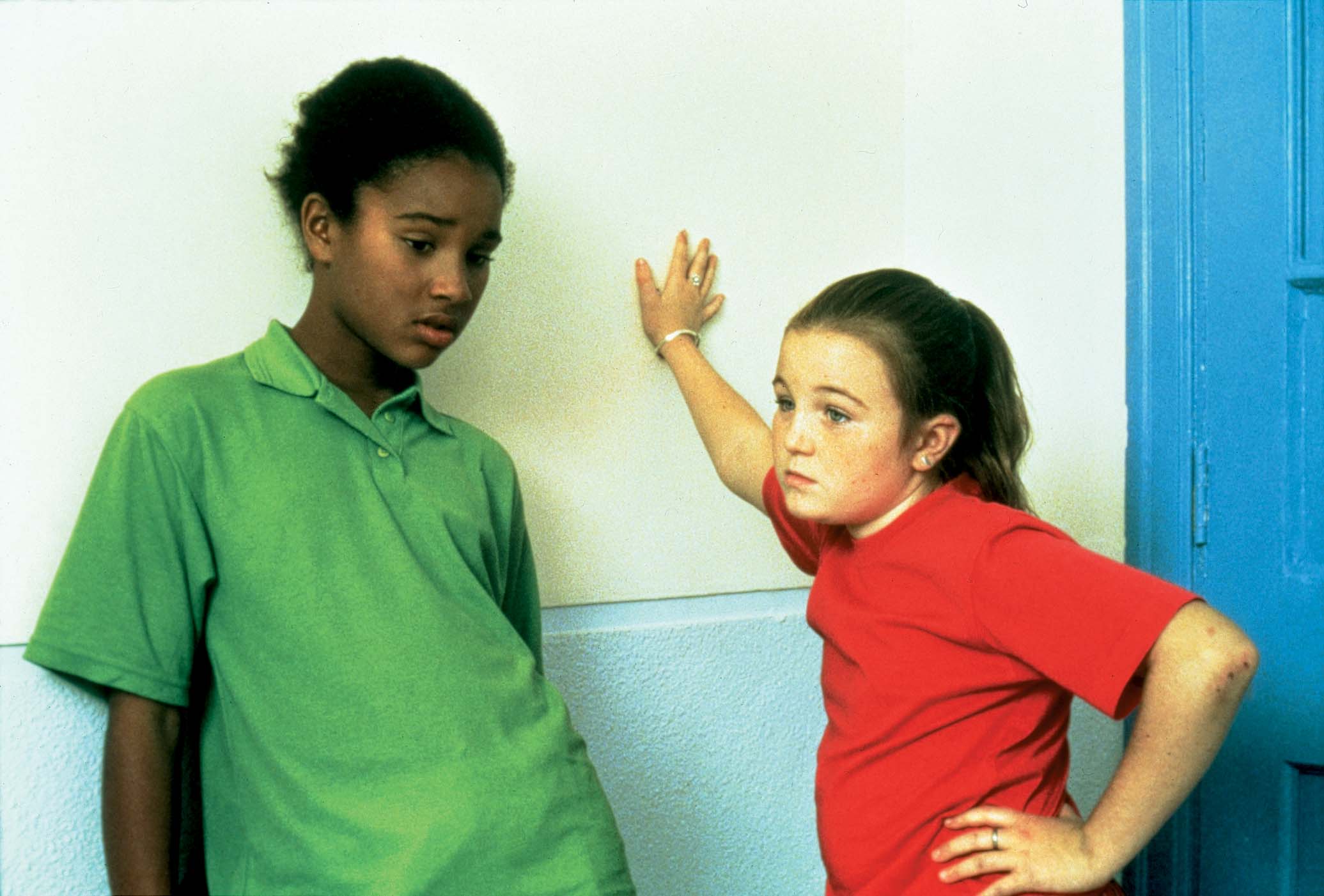Projected images with synchronised audio-narration. Raymond Bellour: ‘Cinema can also be reinvented, another cinema, through other means. Most illustrative of this is Photograph, the latest James Coleman installation. Picture a deep, twilit room where some visitors penetrate, becoming fleeting spectators, like butterflies along the walls. The screen is far, and the projection shows a harsh image of deep contrasts. The sound also is beautiful, so beautiful, a young woman’s voice declaiming a mysterious text to the rhythm of gasping breaths, some allocution in modified classical English. As is usually the case in Coleman, he uses the projection of slides chained in a wisely measured rhythm, designed for the fiction that it plans to instate. This time the subject is a group of girls, very young, rehearsing with some boys for some school show in some poor suburbia. It is rare to find motionless images that seem animated, each by their own inner qualities, and also the whole by the disposition of the edit, with such suspended flow. Seldom our beings captured of such depth and intensity. Coleman stresses this tension in an opening moment, a pelude that is retrieved twice to spread its evocation and perpetuate its effect: almost insensitive movements caused by superimposing several slides on a background that evokes certain bookbinding themes, clouds, mist… I immediately thought of the hardly animated female faces of Persona, which had so powerfully impressed me. In a strangely analogous way, such incomparable movements affect Coleman’s story of still shots as much as the motion shots of Bergman’s film. One also wonders what is the difference between Photograph and La Jetée. The difference, of course, is that Maker has a plot, the story of the man marked by an image from his childhood; and that the story is narrated by a voice-over, and that the music supports it with its dramaturgy. The text composed by Coleman seems removed from its image and reveals an art of counterpoints. But he also elaborates the image, that contributes to build its fiction. The short breaths and the gasping of the voice partake in the suspensions of the photography, and the flow of affects in the illusions of movement that the images produce. The manifest divergence of text and image thus resembles what appeared in the Straubs’ cinema, in the first part of Trop tôt, trop tard, for instance. The effects of sensations created by distance, the sensuous intelligence of the expressive dimensions. This makes us think that one of the good art critics of our times may not be right, and that the art of installation, this other cinema can make a play like or close to the play of cinema art.’ (‘L’autre cinéma’, in: Trafic, No 34, summer 2000) James Coleman (1941) has long been recognised as one of the most important artists working in the field of what Coleman himself calls ‘projected images’. His pieces in the last two decades have included film projections in continuous cycles, for example Fly (1970) and Playback of a Day Dream (1974), projected images with synchronised audio narration, like Clara and Dario (1975) and Lapsus Exposure (1992-1994), video installations and single projected images. He has also developed ‘performed work’ for theatre, which included Ignotum per Ignotius (1982-1984), presented in Rotterdam, Amsterdam and other European cities. His work has been the subject of many essays (see most recently James Coleman Fundacio Antoni Tapies, Barcelona 1999).
Film details
- Country of production
- Ireland
- Year
- 1999
- Festival edition
- IFFR 2001
- Medium/Format
- -
- Premiere status
- -
- Director
- James Coleman


